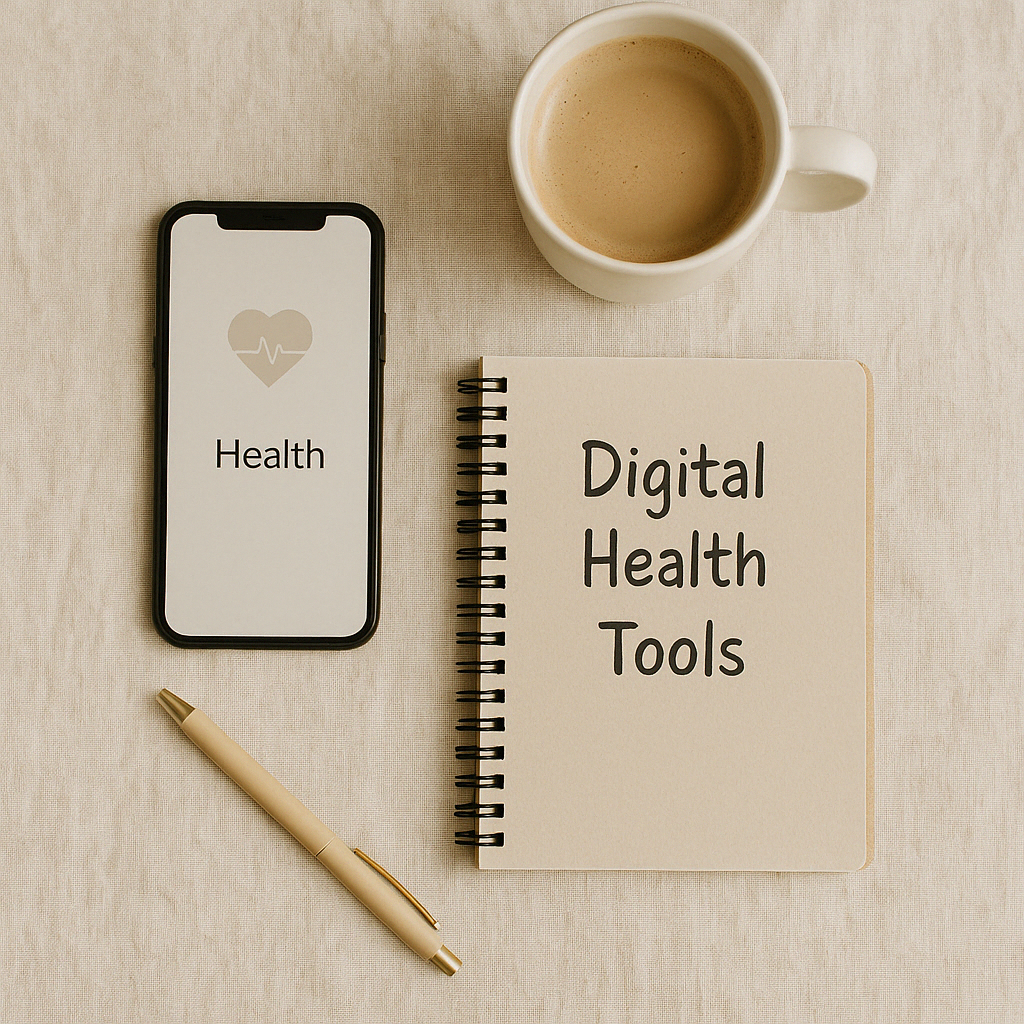
How Digital Health Tools Are Reshaping Patient Care (Without Replacing the Human Touch)
By Rachel Weaver, RN, MHA (in progress)
Welcome to the Future of Healthcare
Healthcare is evolving—and so is your role in it. As a nurse, a healthcare professional, and a patient myself, I’ve watched digital health tools shift from being futuristic buzzwords to everyday essentials. From online doctor visits to apps that track your heart rate, technology is no longer just a part of healthcare—it’s the bridge connecting us to care that’s more informed, more personal, and more empowering.
This isn’t about replacing human touch. It’s about strengthening it. These tools are here to make your experience smoother, safer, and more in sync with your life.
What Are Electronic Health Records (EHRs)?
Think of EHRs as digital versions of the old paper chart. Except smarter. They help your doctor track medications, test results, allergies, and appointments in one secure place. That means fewer repeated questions, faster decisions, and a care team that’s actually on the same page—literally.
As a nurse, I’ve seen how powerful this can be. EHRs reduce medical errors and make it easier to spot trends, catch red flags, and share information across departments. It’s not just convenience—it’s safety.
Wearable Devices Are Smarter Than Ever
Whether it’s your smartwatch tracking steps or a device like KardiaMobile 6L that reads your heart rhythm, wearables are turning passive health data into real-time awareness. These devices can detect early warning signs—before you even feel symptoms—and send useful information straight to your care provider.
For patients with chronic conditions, this kind of tech can mean fewer ER visits and more peace of mind.
Health Apps Are Getting More Personalized
Apps like MyChart let you schedule appointments, message your provider, and review lab results—all without calling the office. Others, like Rejoyn or MyFitnessPal, help you track mood, meals, or movement.
These tools don’t replace care. They enhance it by giving you more visibility and control over your own health. I always tell patients: the more informed you are, the more empowered your choices become.
Telemedicine and Telehealth: More Than a Video Call
Gone are the days of long drives and crowded waiting rooms. With telemedicine, you can talk to your provider from the comfort of home. But telehealth goes even further—offering remote mental health counseling, at-home monitoring, and digital education for chronic conditions.
I’ve worked with patients who wouldn’t have had access to consistent care without these tools. It’s not just about convenience. It’s about equity.
Artificial Intelligence Is Working Behind the Scenes
AI might sound high-tech, but you’ve probably already benefited from it. From flagging abnormal test results to predicting risk factors based on your health history, AI helps providers make more informed decisions faster.
It’s like having an extra brain scanning your chart for patterns—a quiet safety net helping your team personalize your care.
Digital Twins and Genomics: A Glimpse Into the Future
Some clinics are exploring digital twins—virtual models of your health data that simulate how your body might respond to treatment. Combined with genomic testing, providers can tailor medications and therapies to your unique biology.
As someone with genetic variants (MTHFR, DAO, etc.), I know firsthand how powerful this can be. Personalized medicine isn’t just the future—it’s already here for those who seek it.
Blockchain: Keeping Your Records Safer
Blockchain technology is being used to safeguard your health data—think bank-level security. It ensures only the right people have access to your records, creating safer sharing between your doctor, hospital, and specialists.
You probably won’t notice it working. And that’s the point.
Why This All Matters to You
Technology isn’t just changing how we deliver care. It’s changing how we experience it. That means:
- Fewer unnecessary trips to the clinic
- Quicker answers
- More tailored, proactive care
- Feeling less like a number and more like a whole person
These tools are designed to help you show up—not just as a patient—but as a partner in your care.
Challenges Still Exist
Not everyone has access to fast internet, smart devices, or the confidence to use new tools. And some patients still wonder: is this really secure? Is it too impersonal?
I get it. There’s a learning curve. But the good news is many healthcare systems are offering training, support, and even simplified devices to close that gap. If you're feeling overwhelmed—start small. Even one tool can make a difference.
The Bottom Line
Healthcare is catching up with real life. It’s meeting you at home, at work, on the go. And as these tools grow smarter, so does your ability to advocate, monitor, and care for your own health.
You don’t need to be tech-savvy. You just need to be open.
Because at the heart of it, digital health isn’t about data. It’s about you.
Rachel Weaver is a registered nurse and master’s-level healthcare administration student with over 15 years of experience working alongside care teams, supporting digital transitions, and advocating for patient-centered solutions. She believes in meeting patients where they are—with compassion, clarity, and just the right touch of tech.
0 Comments Add a Comment?